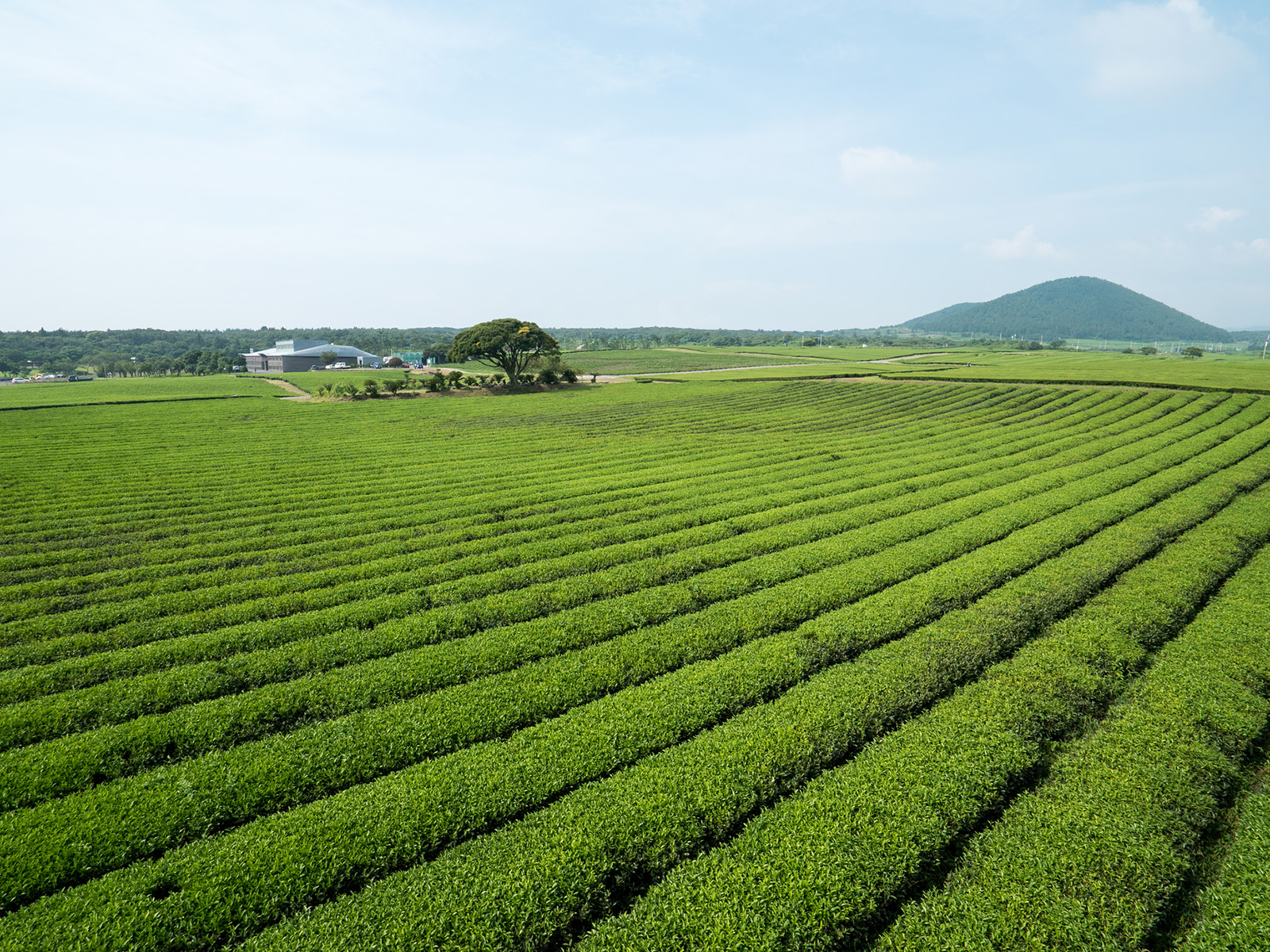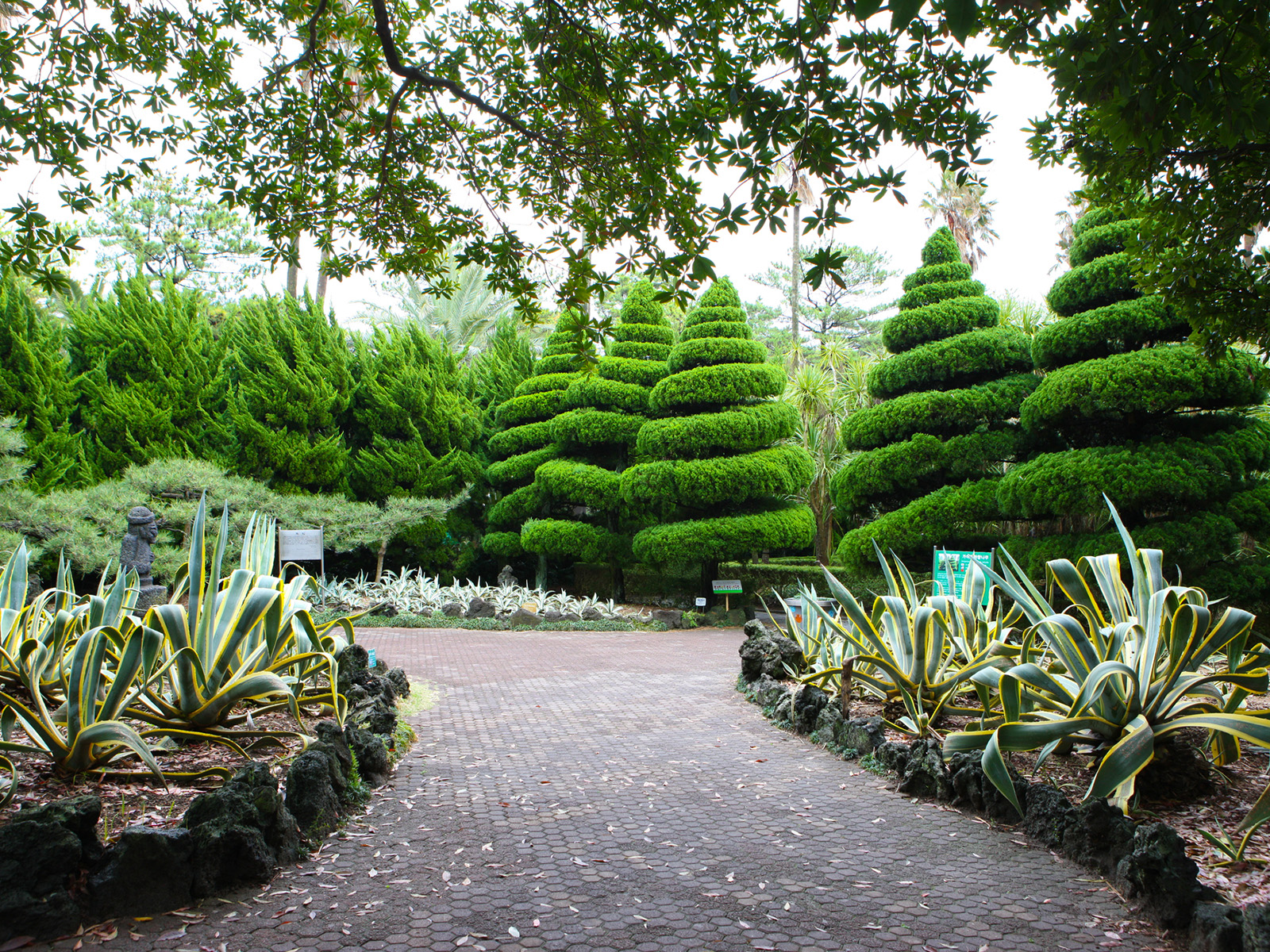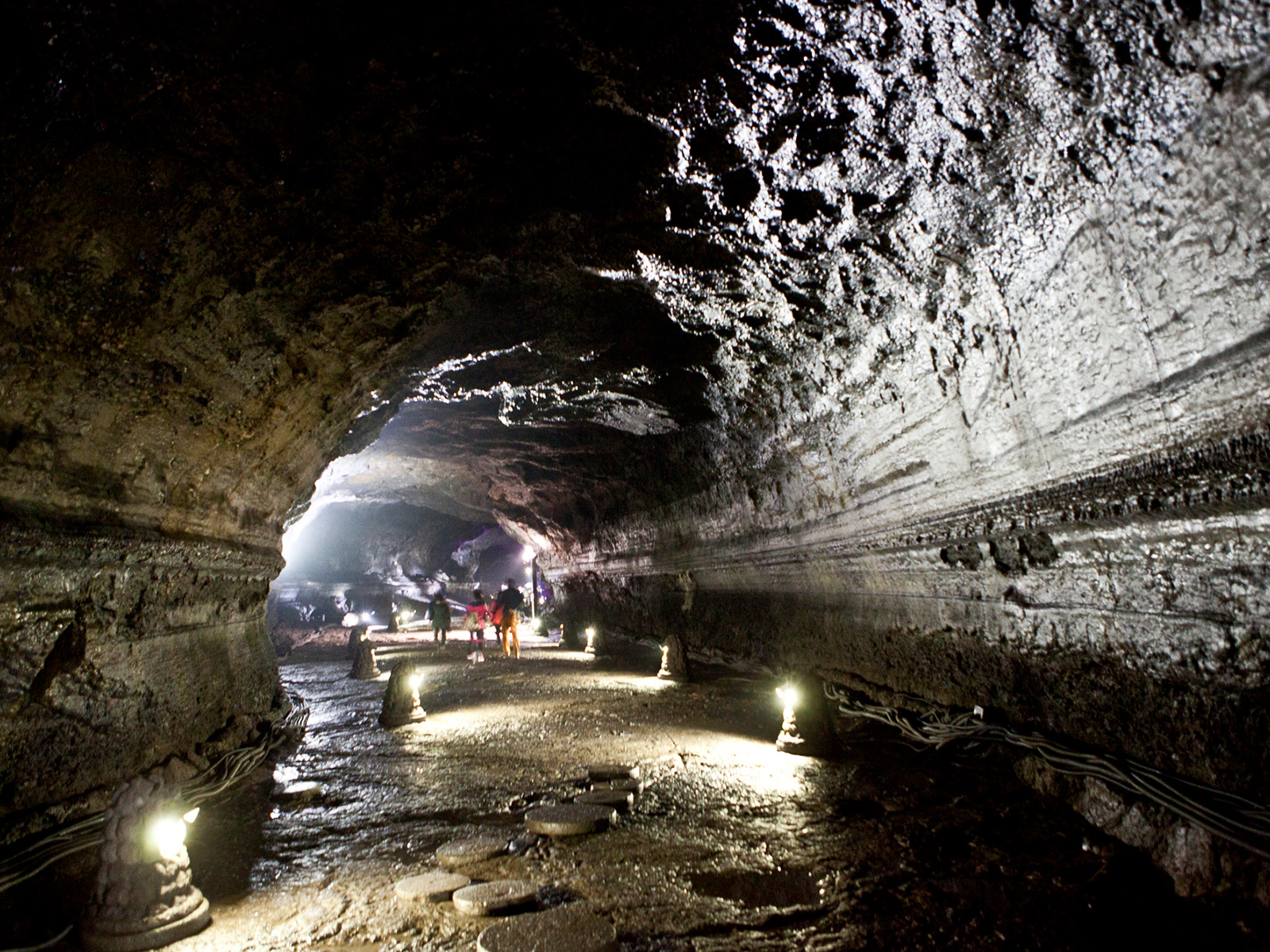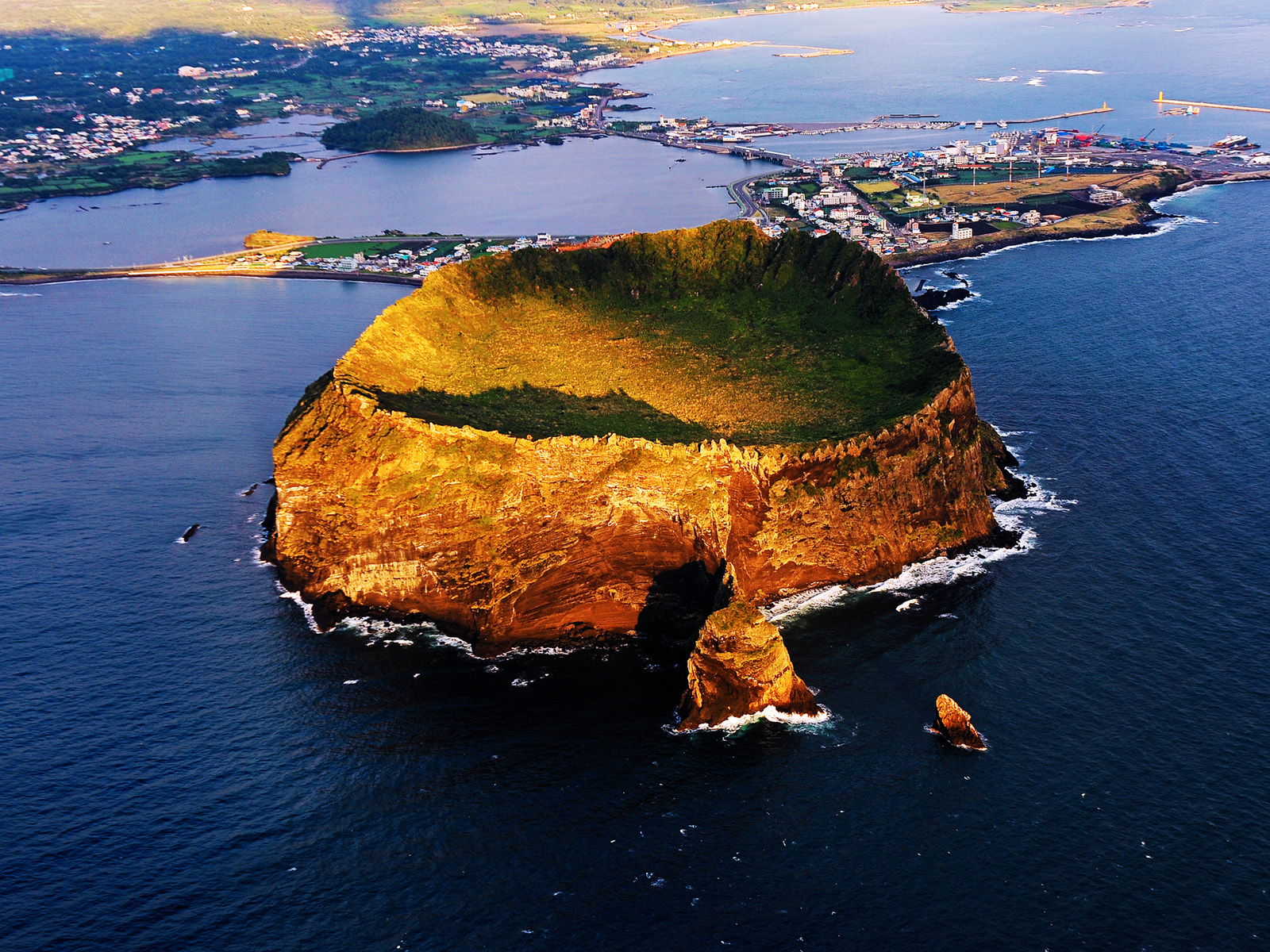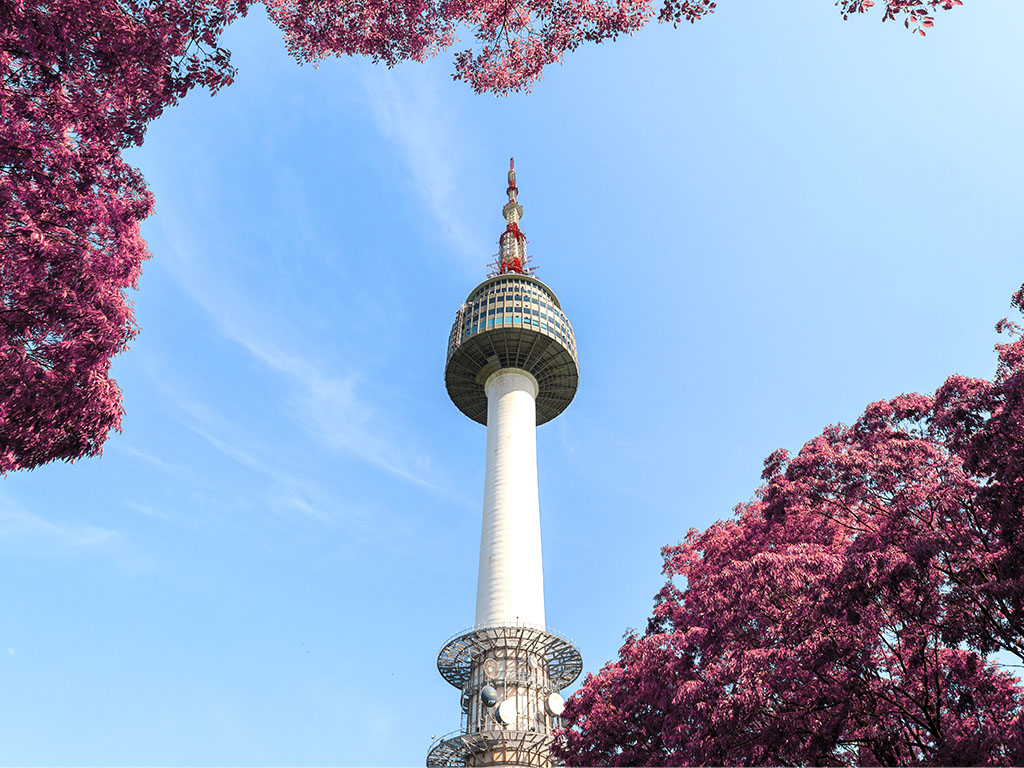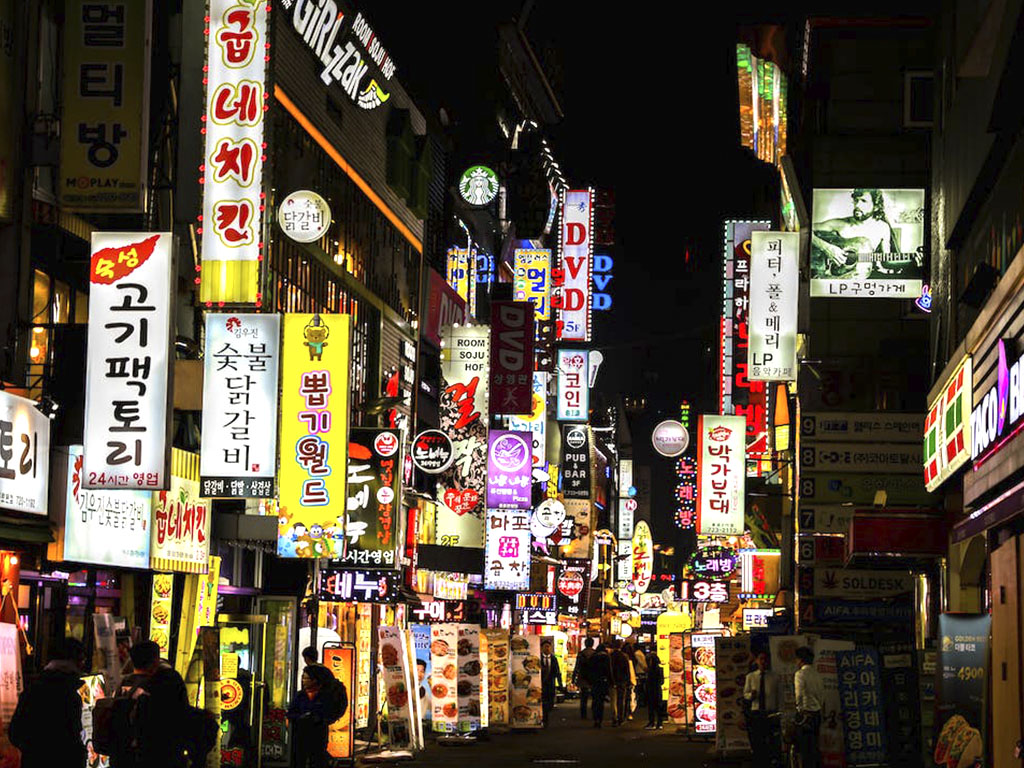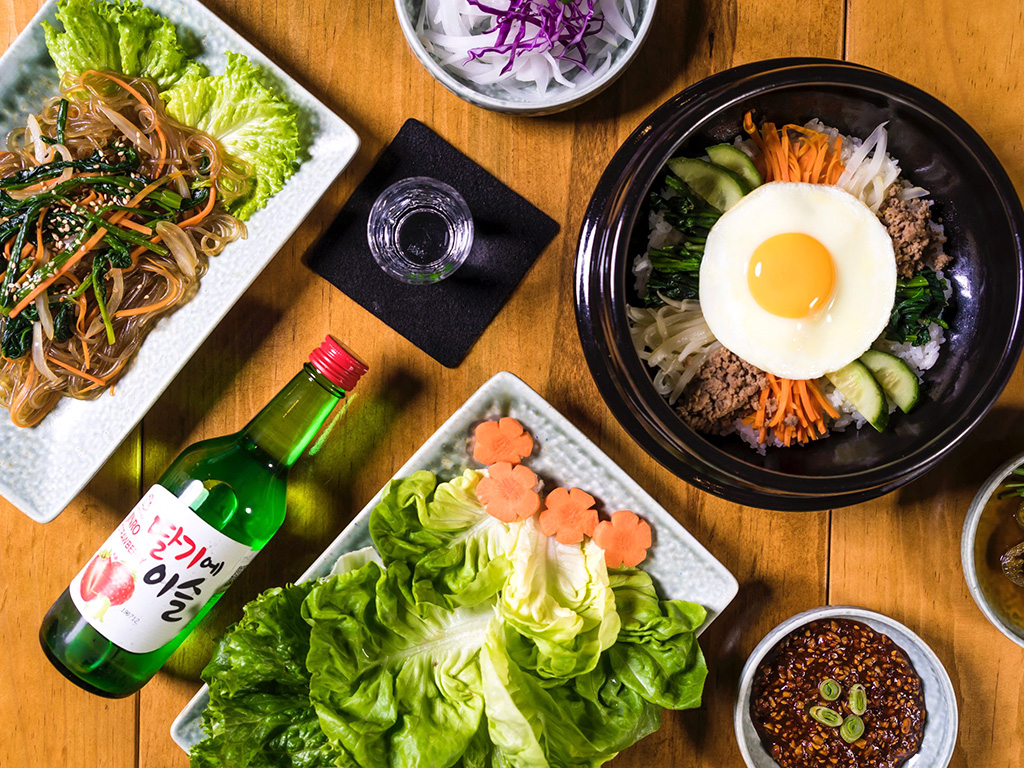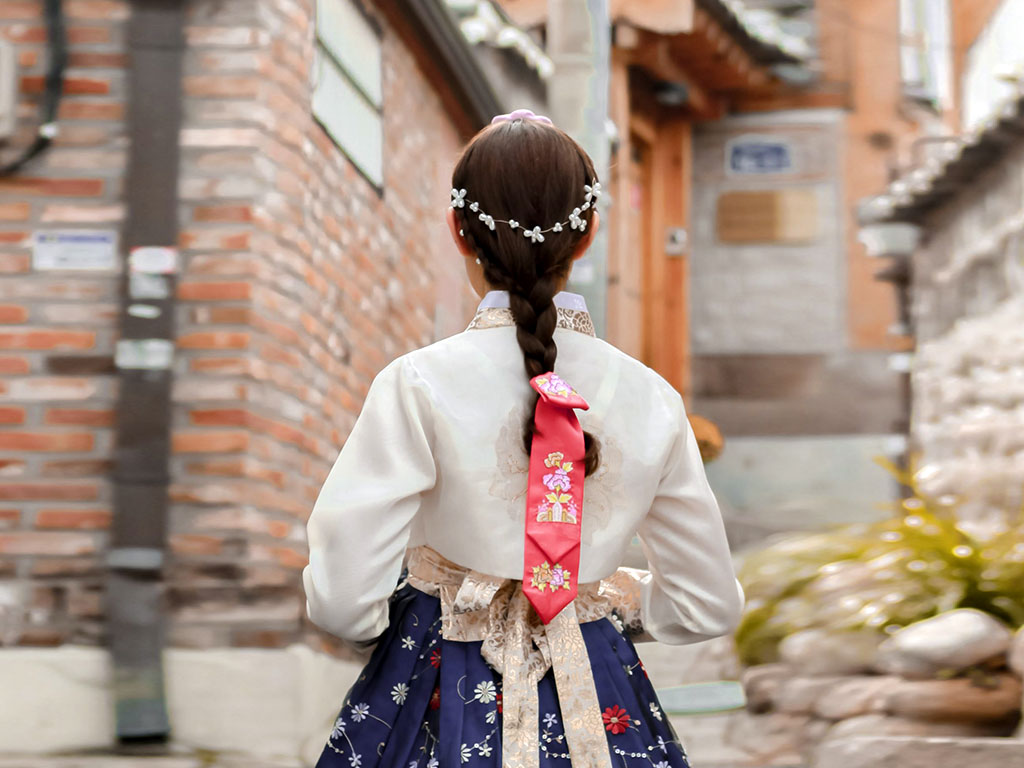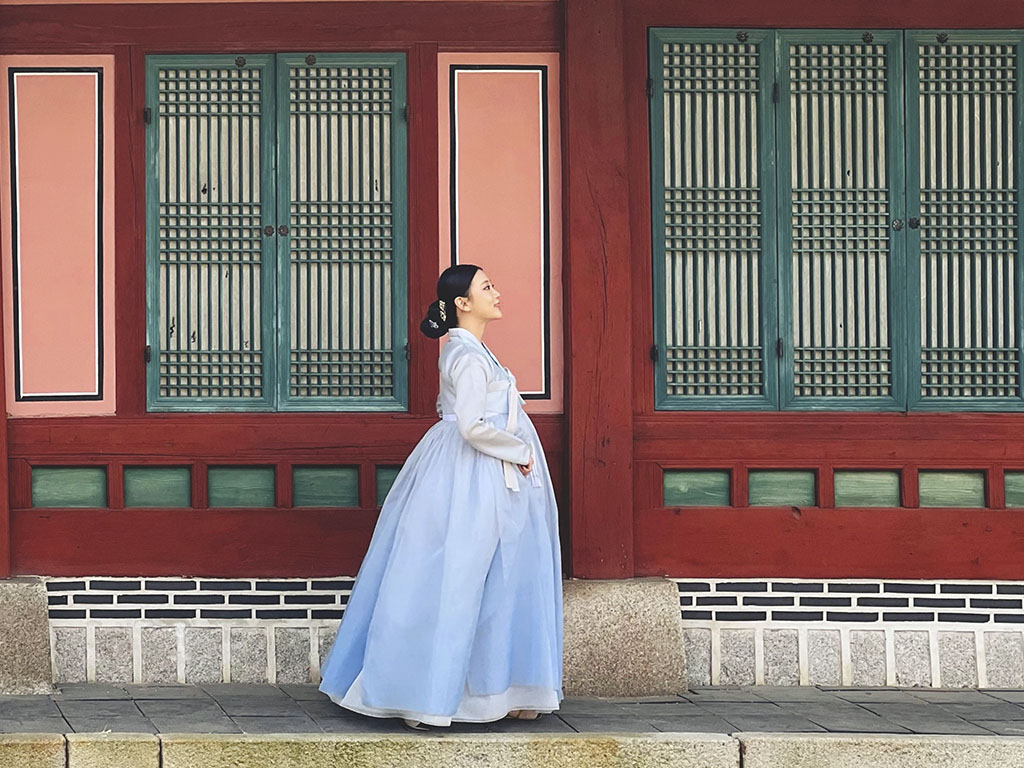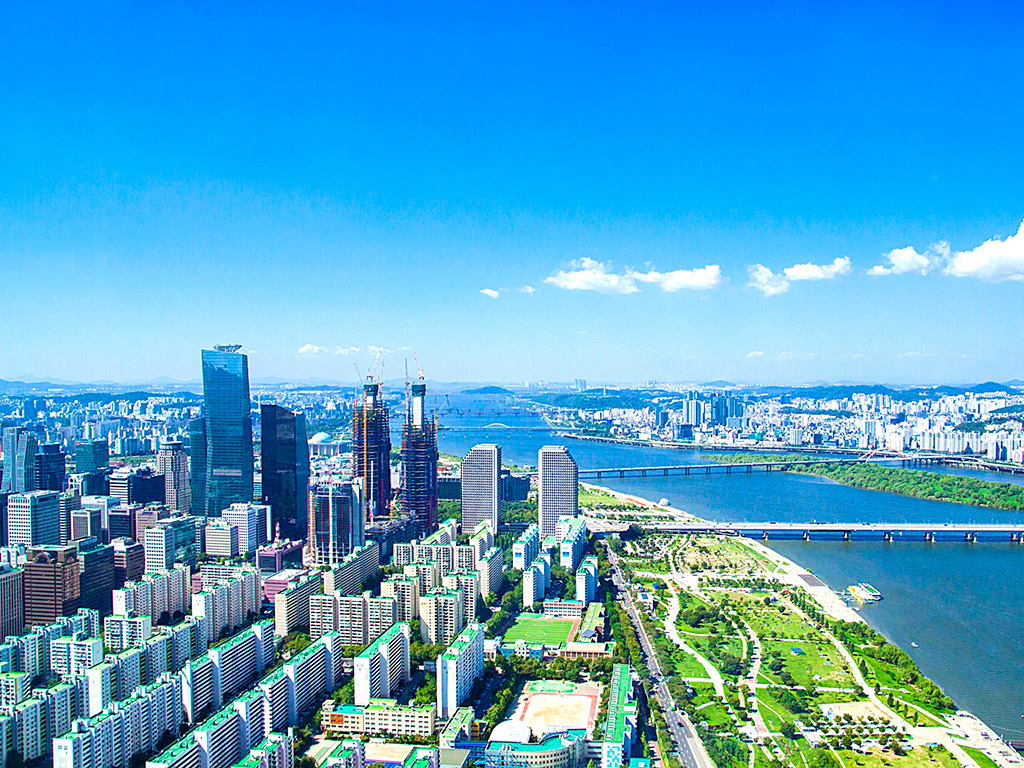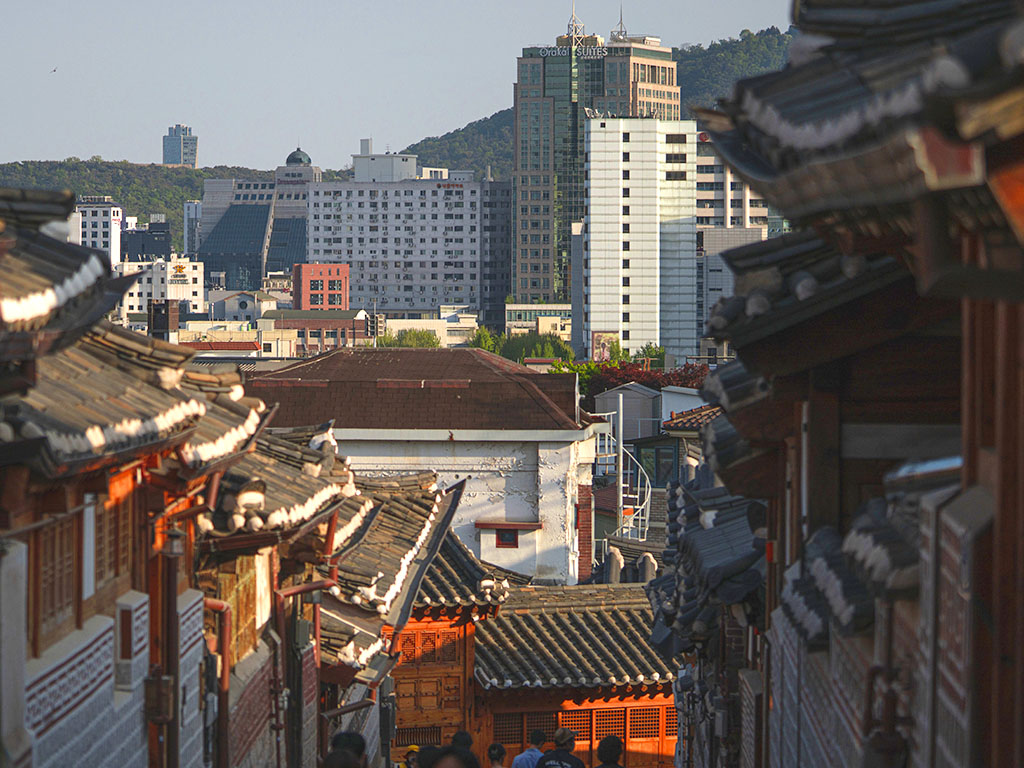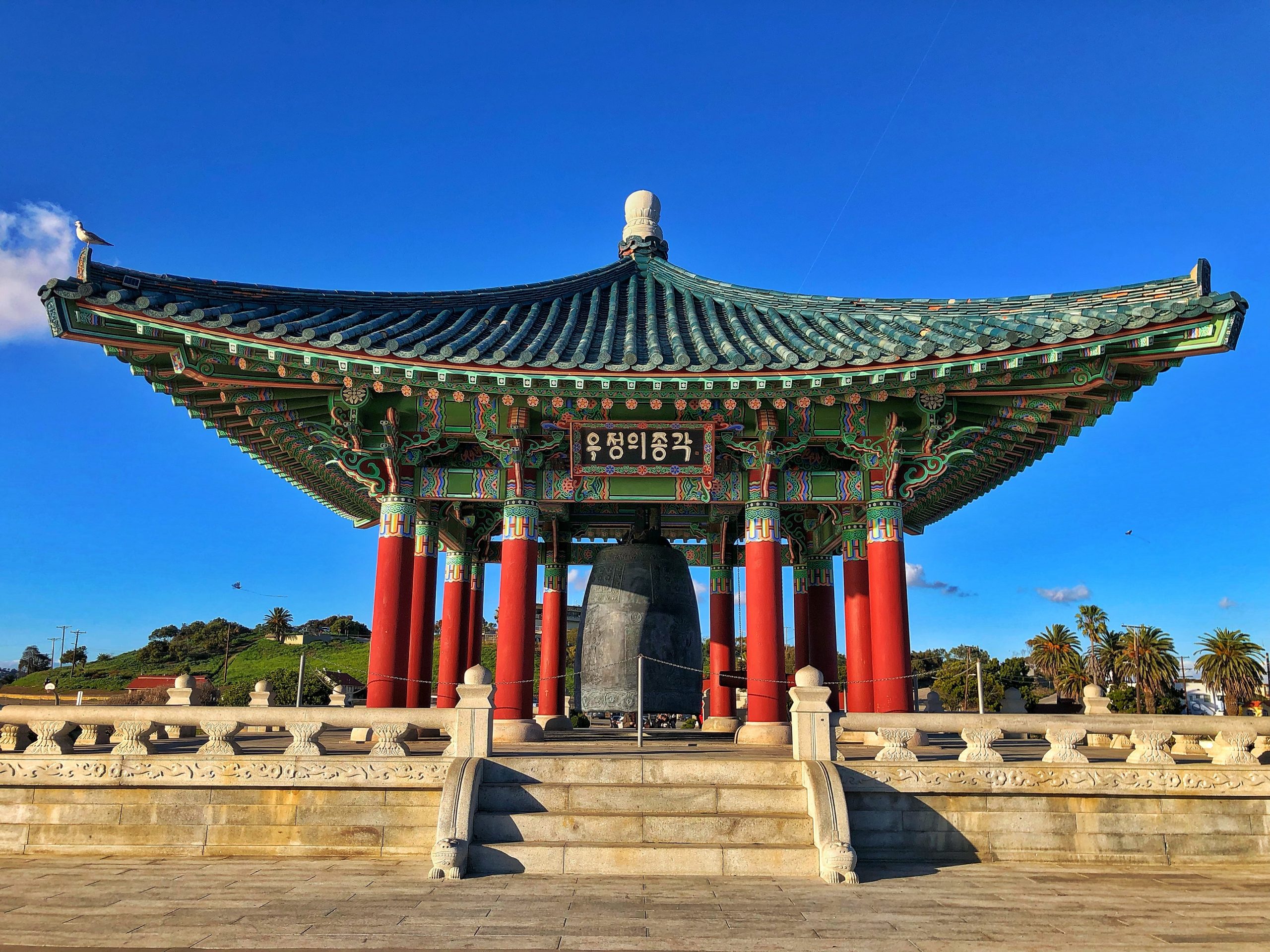Day 1: Arriving in Jeju
Upon arrival at Jeju Airport, meet our tour guide upon exiting customs and transfer to the Hotel. The rest of the day is free at your leisure.
Meals: N/A
Accommodation: Grand Hyatt Jeju or similar
Day 2: Jeju
Explore Hyeopjae Beach, 32 km west of Jeju, offering a picturesque blend of white sandy shores, Biyangdo Island, and a lush pine forest.

Head to Hallim Park, a premier Jeju destination with diverse gardens spread across 100,000 sq meters. Visit O’sulloc Tea Museum, a cultural hub by Amorepacific, presenting a fusion of Western and Eastern influences.

Next heading to the blissful and picturesque ocean view of Sanbang Mountain, Brother Island, Hexagon Lave cliff of Mt.Songak and Dragon Coast, which have been designated as Global Geoparks, from the Sanbang Mountain Cruise(about 1hour).

Wrap up the day at Cheonjeyeonpokpo Falls, often referred to as “The Pond of God,” where water dramatically cascades in three stages—the first dropping into a 21-meter-deep pool before continuing its journey through two more waterfalls and out to sea. Just east of the main fall, a hidden cave features water dripping from its ceiling, adding to the falls’ ethereal charm. Nearby, the graceful Seonimgyo Bridge—also known as Chilseonyeogyo, or “Seven Nymphs Bridge”—spans the gorge, linking the falls to the Jungmun Tourist Complex. At Cheonjeru Pavilion, a mural tells the enchanting tale of seven heavenly nymphs and their encounter with the mountain god, bringing local legend to life.
Meals: Breakfast
Accommodation: Grand Hyatt Jeju Or Similar or similar
Day 3: Jeju
Begin your day with a visit to Seongeup Folk Village at the foot of Halla Mountain, showcasing Jeju’s unique culture from 1410 to 1914, including the well-known local tongsi.
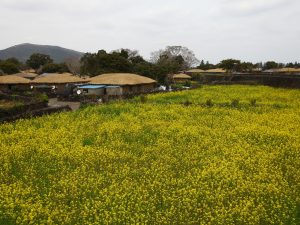
Explore Jeju Haenyeo Museum, established in 2003, highlighting the activities and culture of Jeju’s haenyeo, female divers without diving equipment, with an observatory offering scenic views.

Continue to Seongsan Ilchulbong Peak for breathtaking panoramic views and don’t miss the UNESCO World Heritage site, Manjanggul Lava Tube, one of the world’s largest, with well-preserved formations over one hundred thousand years old.
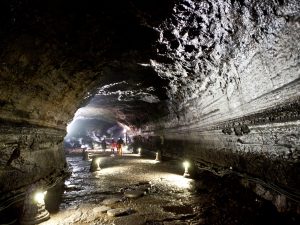
Meals: Breakfast
Accommodation: Grand Hyatt Jeju Or Similar
Day 4: Jeju – Seoul
After Breakfast, we will be flying to Seoul today. Upon arrival at Incheon International Airport, met our representative and transferred to the Hotel(Hotel check-in is available after 14:00) The rest of the day is free at your leisure.
Meals: Breakfast
Accommodation: Metro Hotel or Travelodge Myeongdong Euljiro or similar
Day 5: Seoul
After breakfast, Visit Gyeongbokgung Palace(Deoksu Palace on Tue) The Royal Guard Changing Ceremony, National Folk Museum, Korean Ginseng Center. After lunch, we’ll visit Korean Folk Village (an hour and half drive away from Seoul) ,you may experience the culture of the late Joseon Dynasty, It’s huge village that has about 260 different types of house of each province
Meals: Breakfast
Accommodation: Metro Hotel or Travelodge Myeongdong Euljiro or similar
Day 6: Gongju – Jeonju
Depart Seoul to Gongju, (130Km/1.5hours) , We’ll visit The Tomb of King Muryeong(UNESCO) , the tombs of the Baekje Dynasty. The seven tombs located on the southern slope of Songsan Mountain are of Baekje kings including King Muryeong. Among the seven royal tombs, three were excavated west of a valley (Nos. 5-6, tomb of King Muryeong), and four, in the northeast (Nos. 1-4). These six were excavated during the Japanese colonial rule, while the royal tomb of King Muryeong was found in 1971 during the repair work for Nos. 5-6.
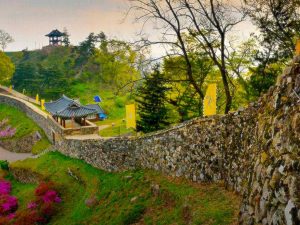
Gongsanseong Fortress(UNESCO) which is a mountain castle which was established during the Baekje Period (234-678). The fortress is more than 2.6 kilometers long at 110 meters above sea level. Built using earthen fortifications during the Baekje dynasty, the fortress was strengthened during the Joseon dynasty with stones.
After it, head to Jeonju (80Km/1 hr) to visit JeonjuHanok Village which includes about 700 traditional Korean houses called Hanok
Meals: Breakfast
Accommodation: Ramada by Wyndham Jeonju or similar
Day 7: Jeonju – Gwangju – Suncheon
After Breakfast, Visit Gwangju (100km / 1hr 20min), the leading city of Honam region and the birthplace of a modern democratic movement in Korea next, the May 18th National Cemetery, which is a symbol of freedom and democracy. The cemetery holds the graves of 764 victims of the May 18th Democratic Uprising in 1980, seven structures, and many monuments.
Heading to Suncheon (100km/ 1hr) where you will visit Suncheon Bay Garden then we move to Yeosu, a port city, and look around the Historic Site of Admiral Yi Sun-sin’s Path.
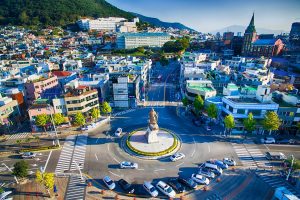
Meals: Breakfast
Accommodation: Hotel U-Castle or similar
Day 8: Yeosu – Busan – Gyeongju
After Breakfast, Visit Jinjuseong Fortress, historically linked to the Japanese invasion in 1592. The reinforced stonewall has a circumference of approximately 1,760 meters, 5-8 meters in x_height, and contains three wells and springs. According to Ha Ryun’s Seongmungi in Donggukyeojiseungnam Record, the fortress was frequently destroyed during invasions and was reinforced by Jinju’s minister, Kim Jung-gwang during the fifth year of Goryeo Woo King’s reign (1379). After that, take the train to Busan (100 km/1.5hrs), When arrive at the station, Head towards Jagalchi- Fishery Market, Busan’s largest seafood market, and Discover Haeundae Beach and Dongbaek Park.

Meals: Breakfast
Accommodation: Commodore Hotel Gyeongju or similar
Day 9: Gyeongju – Andong – Wonju
After Breakfast, Visit Unesco World Heritage Seokguram Grotto,Seokguram Grotto is a hermitage that is part of the Bulguksa temple complex. The grotto overlooks the Sea of Japan (East Sea) and rests 750 meters above sea level. It holds some of the best Buddhist sculptures in the world, including the main Buddha. Construction lasted from 742 to 774.
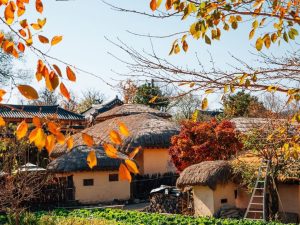
The nearby Bulguksa Temple is the most famous Buddhist temple in Korea and the home to a number of important relics from the Silla period, including most obviously the two stone pagodas Tabot’ap and Sokkat’ap. It also dates from the 8th century but has been rebuilt on a number of occasions
The beauty of the temple itself and the artistic touch of the stone relics are as awesome and fascinating as to be highly praised by visitors from all over the world, next Move to AndongHahoe Folk Village (170km/ 2hr 30min), Arrive at the Parking lot of Hahoe Folk Village(UNESCO)which has preserved the housing architecture and the village structure of the Joseon Dynasty. Moreover, the Village was naturally formed with people who live there. It has become world-famous for the visit of Queen Elizabeth II of Great Britain.
Depart from the Parking lot of Hahoe Folk Village→Move to Wonju(155km/ 2hrs)decorated with the Chiaksan Mountain and the Seom River that circles the area, and as the capital of Gangwon Province for 500 years during the Joseon Dynasty, it maintained rich tradition and cultural relics.
Meals: Breakfast
Accommodation: RAMADA Hotel & Suites Gangwon PyeongChang or similar
Day 10: Wonju – Mt.Sorak – Seoul
After Breakfast, visit Seorak National Park, is a national park in South Korea. It is listed by the South Korean government with UNESCO as a tentative World Heritage site. The government designated the area as a nature reserve in 1965 and UNESCO designated it as a biosphere reserve in 1982. The peaks of the Seoraksan Mountains break through the clouds while jade-like water flows through the valleys, creating breathtaking views and making this Korea’s most famous national park. Due to the many rare species found here, UNESCO designated this national park a Biosphere Preservation District in 1982. *You may take the Cable car to Gwongeumseong fortress (Optional for Shinheungsa temple & cable car: KRW15,000pp).

Meals: Breakfast
Accommodation: Royal Hotel Myeongdong or similar
Day 11: Seoul
Free Leisure in Seoul City
Meals: Breakfast
Accommodation: Royal Hotel Myeongdong or similar
Day 12: Seoul
Free Leisure in Seoul City
Meals: Breakfast
Accommodation: Royal Hotel Myeongdong or similar
Day 13: Seoul
After breakfast at your hotel, you will be picked up at your hotel lobby 4 hours before your flight departure.
Meals: Breakfast
Accommodation: N/A


